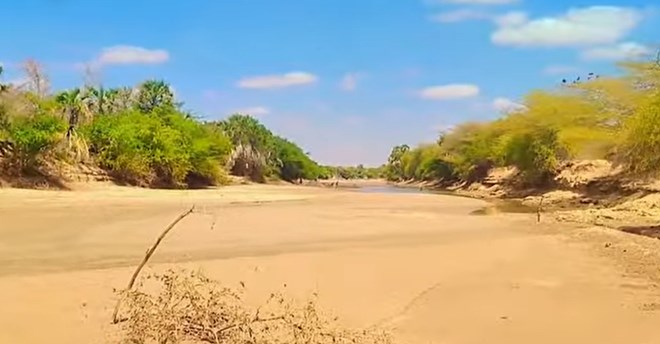Gedo (KAAB TV) – Reports from Beled Haawo District in the Gedo Region indicate that the Daawo River, which flows through the outskirts of the district, has dried up. This has left the local population, who depend on the river for their daily water needs, facing severe challenges.
The Daao River is Somalia’s third-largest river, following the Jubba and Shabelle Rivers. It flows through Beled Haawo, Dolow, and Luuq Districts in Gedo Region.
According to local sources, the river has started to dry up earlier than usual, causing growing concern. Residents, particularly those living near the riverbanks, expressed anxiety over the impact on their farms and livestock, which have traditionally relied on the river for water. In response, people have begun digging temporary water pools to provide minimal water for their livestock.
The situation worsened in February, when the river’s water levels receded significantly. Local residents fear that, if there is no rainfall in the upcoming seasons, the situation could worsen, leading to the loss of livestock and further hardship for the community. The ongoing drought in the region has already put a strain on resources, and the added crisis of a drying river is intensifying the challenges faced by these communities.


